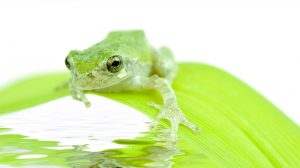Definition
noun, plural: Kupffer cells
A specialized stellate macrophage cell that is located fixedly within the liver sinusoids
Supplement
Kupffer cells are the specialized macrophages located in the liver, particularly at the lining of liver sinusoids. They are part of the mononuclear phagocyte system. Their name is derived from Karl Wilhelm von Kupffer, a German anatomist who was the first to describe them in 1876.1 Initially, he referred to these cells as sternzellen because of the star-shape of the cells. He described the cells as specialized endothelial cells of the liver capable of phagocytosis. Tadeusz Browicz, a Polish pathologist, was able to correctly identify them as macrophages residing in the liver.2
The Kupffer cells originate from bone marrow stem cells and migrate to the liver via the bloodstream as monocytes. In the liver sinusoidal walls, they differentiate into Kupffer cells.3
The Kupffer cells can be found lying next to endothelial cells or in the endothelial lining and may extend into the space of Disse. They contain peroxidases in the endoplasmic reticulum, which make them different from hepatic endothelial cells since the latter lack peroxidase. 4
The Kupffer cells are the most abundant resident macrophages. They are the body’s largest population (about 80%) of fixed macrophages of the mononuclear phagocyte system.
The function of Kupffer cells is to break down red blood cells through phagocytosis, liberating the globin chains and the heme component for further metabolic processing and re-use. Kupffer cells also play an essential role in innate immunity. They are involved in phagocytosing blood-borne bacteria passing through the liver from the gut. They are also capable of producing cytokines, chemokines, and ROS. Therefore, they are capable of recruiting monocytes into the liver, as well as participate in the development of alcoholic liver damage (via ROS production).
Variant(s):
- Kupffer-Browicz cell
Synonym(s):
See also:
- mononuclear phagocyte system
- Lymphoreticular system
- Secondary lymphoid organ
- Macrophagocyte
- Amoeboid movement
Reference(s):
1 Haubrich, W. (2004). “Kupffer of Kupffer cells”. Gastroenterology 127 (1): 16.
2 Szymańska, R., Schmidt-Pospuła, M. (1979). “Studies of liver’s reticuloendothelial cells by Tadeusz Browicz and Karl Kupffer. A historical outline”. Archiwum historii medycyny 42 (3): 331–6.
3 Naito M, Hasegawa, G., & Takahashi, K. (1997). “Development, differentiation, and maturation of Kupffer cells.” Microscopy Research and Technique 39(4): 350–64.
4 Wintrobe, M. M. (2009). Wintrobe’s Clinical Hematology, Volume 1. Lippincott Williams & Wilkins. p258-259.





